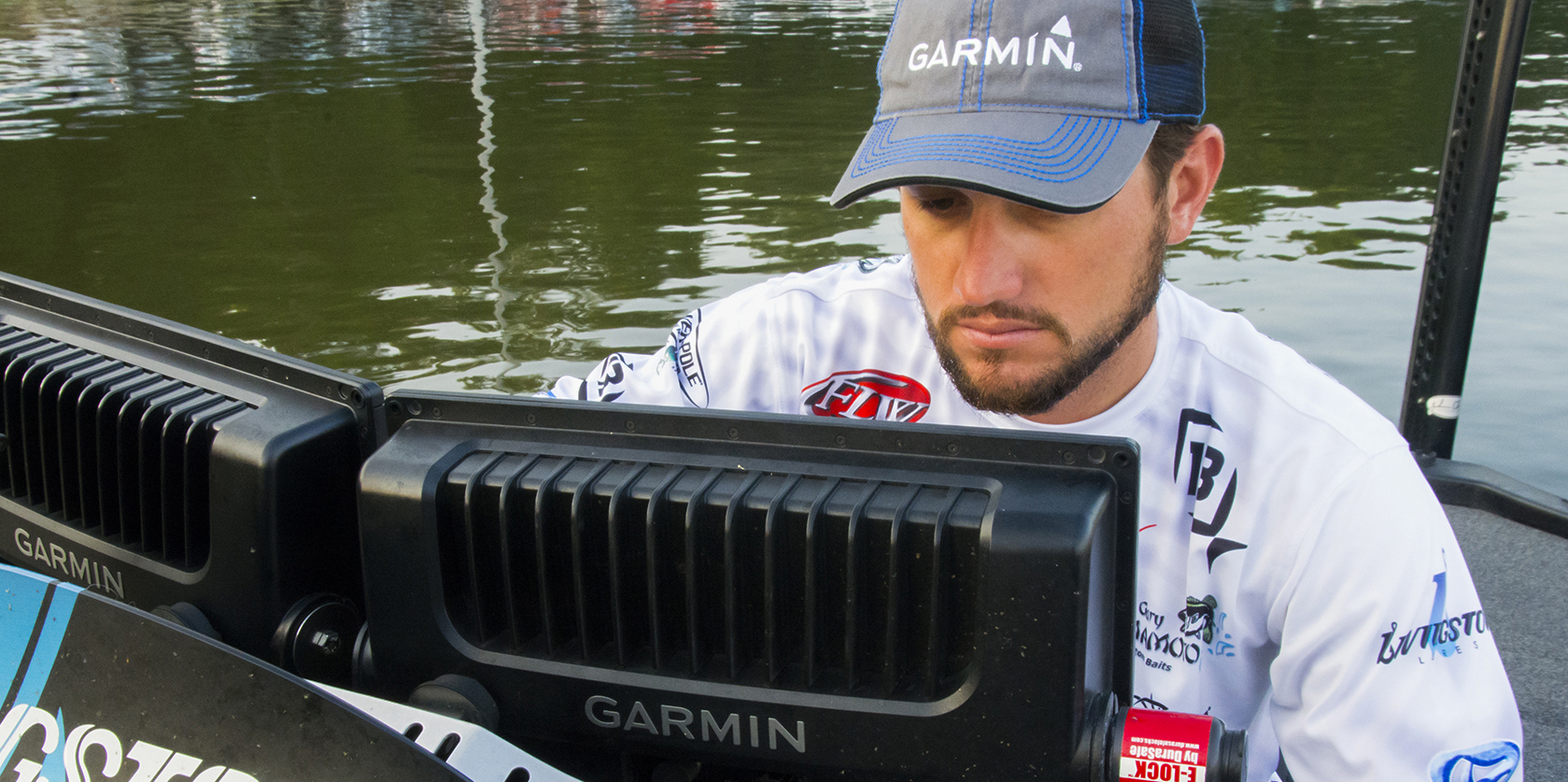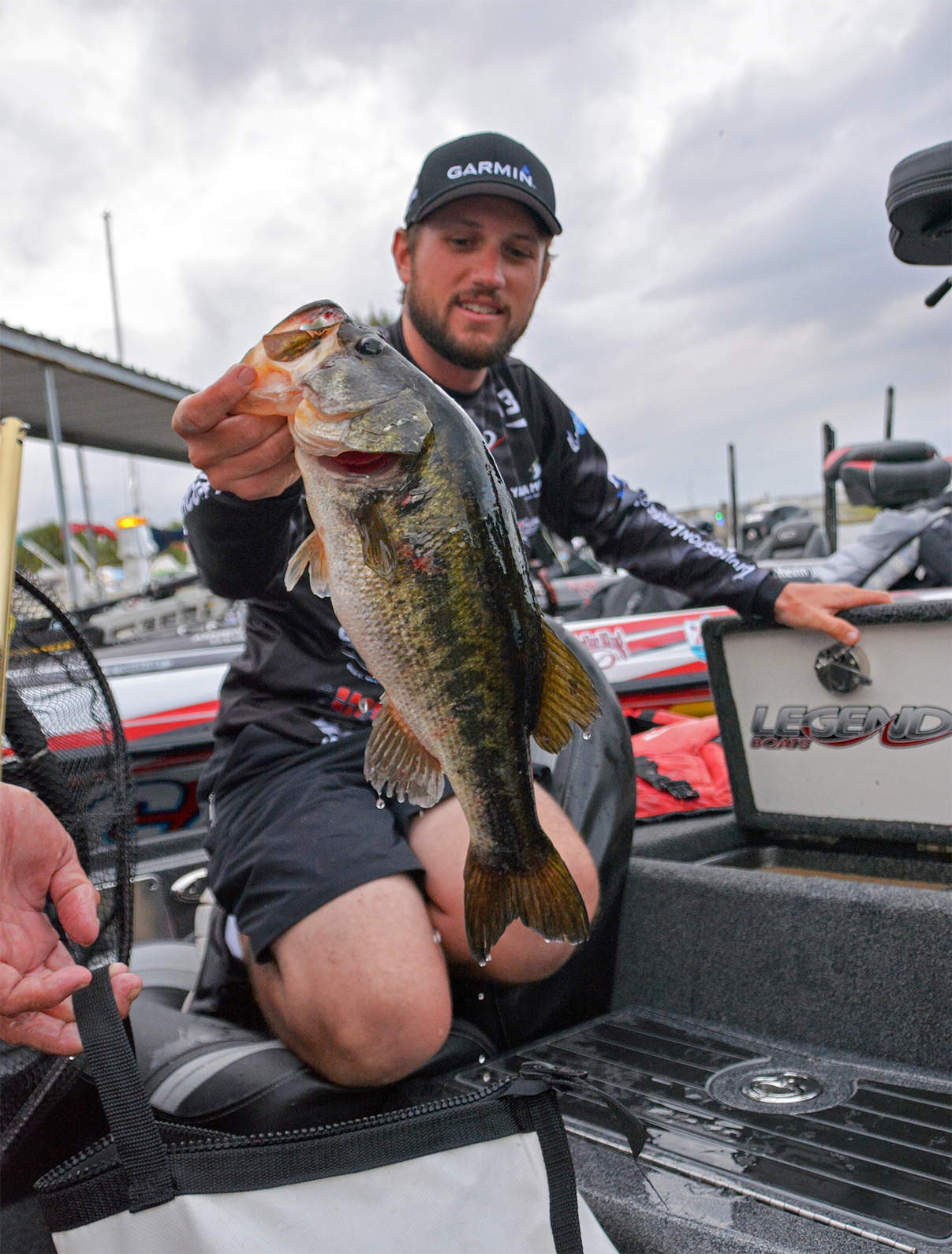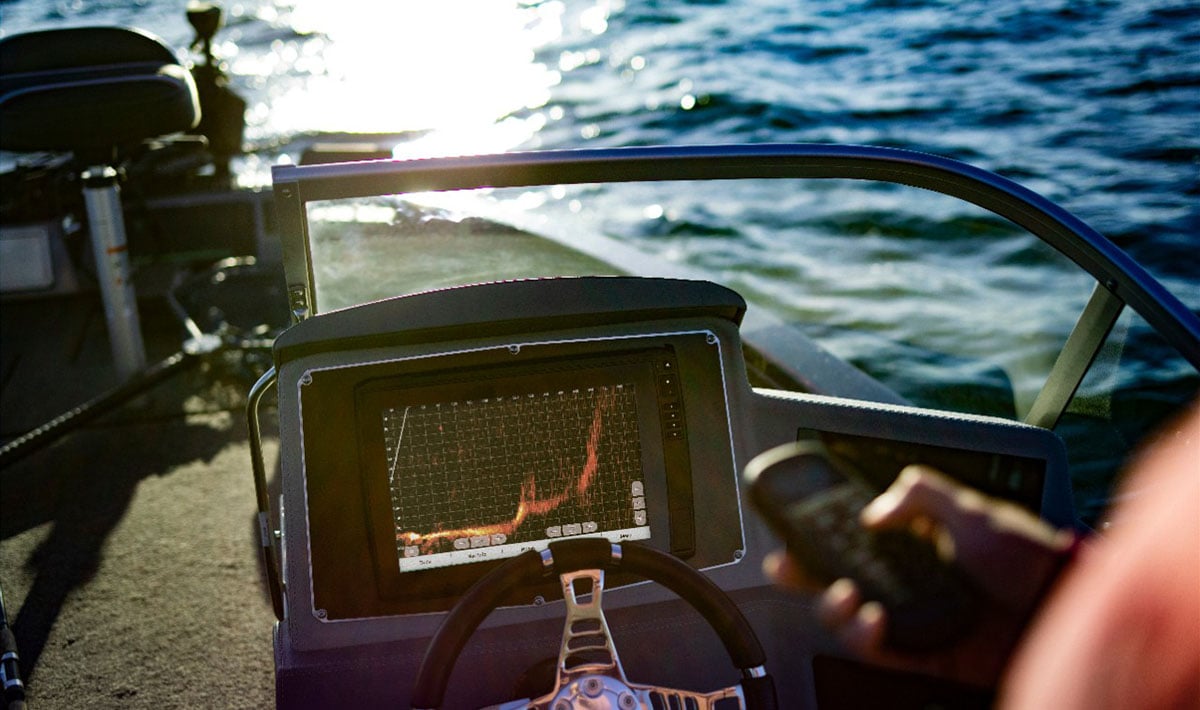
Stetson Blaylock: I rely on ClearVü and SideVü to find fish in the fall
Cooling water around the country has triggered the yearly migration of shad and baitfish into the shallows of lakes and reservoirs across the country. Consequently, fish are on the move. We asked Garmin pro Stetson Blaylock how he utilizes his Garmin GPSMAP 7612xsv to find bass in the fall.
Q: Fall brings about a very specific set of conditions in many bass fisheries. How would you describe this time of year?
SB: Shad are moving into the backs of creeks right now, and that really defines a lot of your fall fishing because bass are moving right in with them. This is not the time of year to focus on deep, open water or main-lake ledges: fall fishing is about working those shallow creeks where bait is balled up.
Q: What’s your first step in breaking down a fishery this time of year? What’s your best starting point?
SB: I start out by looking for the two or three biggest main creek arms on the lake. I’m not necessarily interested in the main river arm, but the bigger creeks off the main lake itself. I’m searching for the furthest-protruding points leading into that creek arm – something that looks like a trap, where bass will follow bait into the creek mouth and then stop on those points.
From there, I’m looking for ditches and drains that lead all the way into the backs of the creeks, because those are usually where you’ll find bait. Having the right mapping software is key to that: LakeVü HD Ultra contours are pretty important to me in identifying where those ditches turn as they head into the backs of those creeks.

Q: Once you’ve found those points, how do you identify individual spots to fish?
SB: The best way to locate fish this time of year is by idling and finding shad, but you have to have a method to what you’re doing or you’ll miss the best places. The most important thing right now will be the ability to run Garmin SideVü and ClearVü scanning sonars in shallow water, which allows you to quickly and clearly look at those points as you’re working your way around the creeks. All I’m doing is idling over those points that the LakeVü HD Ultra is showing me, and looking for shad balls with my SideVü and ClearVü.
A lot of times when I’m doing that, I may actually go to the back of the creek first and idle every point coming out of the creek, until I’m back out to the main point.
READ: Stetson Blaylock – Fishing Deep Brush Using Panoptix
Q: Once you’re inside these creeks, what specifically are you looking for?
SB: I’m scanning for key little depressions in the backs of the ditches, places where fish can get into and feel safer because it’s a little bit deeper. They’ll move up on the edges of those depressions to feed, but they like the security of deeper water. For example, I just fished a local tournament where I idled all the way into the back of a creek with my ClearVü/SideVü and found a 6-foot depression about the size of my boat. That’s where the fish were.
Garmin’s ClearVü and SideVü scanning sonars are so crisp and clean; you really know what you’re looking at when you see those spots on your graph.
Q: What’s your bait of choice this time of year in that situation?
SB: My number one bait is a shad-colored squarebill crankbait, by far. You’re trying to mimic shad, and a squarebill does that better this time of year than any other hard bait. You want a squarebill that dives 3 to 5 feet, and maybe a smaller one that dives 2 to 4 feet. You can work the edges of those ditches with those two baits, and really get them in front of bass that are suspended, feeding on shad.
Follow Garmin Fish & Hunt on social media for videos, tips from pros and articles to help you become a better angler.




